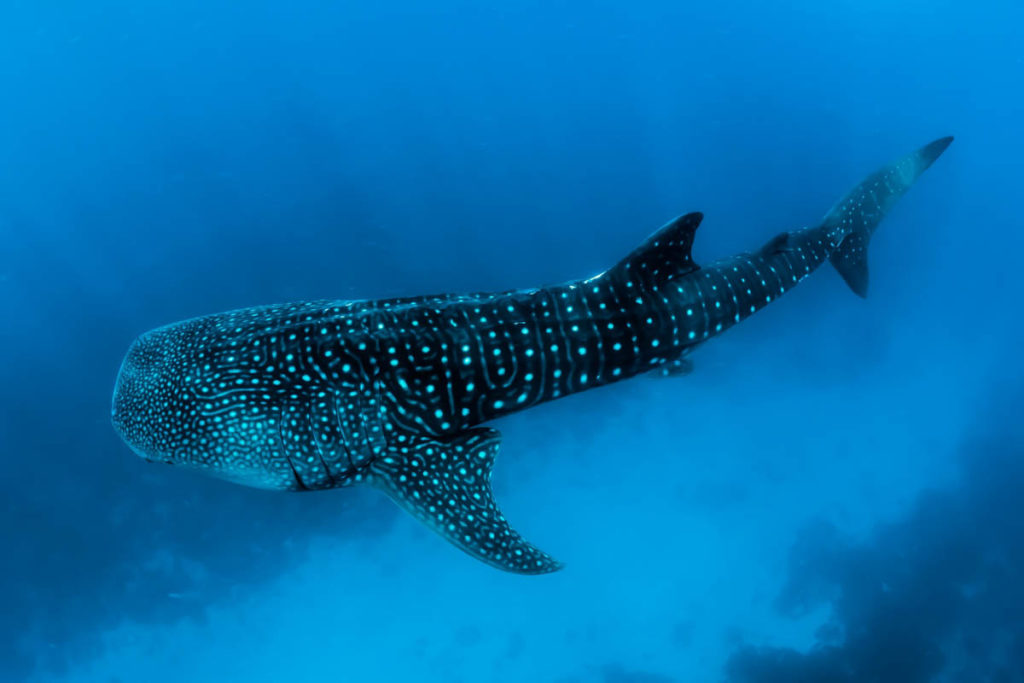According to the IUCN, the population in the Atlantic is thought to have been reduced by more than 30% and in the 63% over the past 75 years! And the populations are continuing to decrease.
Because of this, whale sharks are classified as endangered. The main threat to whale sharks is the growth of unregulated and unsustainable fisheries to supply international trade demands and pollution.
- Whales sharks are the largest fish in the world. They are actually sharks, not whales.
- Whale sharks can grow up to 40 feet /12 meters long and weigh 20.6 tons, that’s about the size of a school bus!!
- Each whale shark has its own unique pattern of spots, much like human fingerprints.
- Whale sharks are slow swimmers moving at speeds of no more than 4 kph/3 mph, but a single whale shark can travel 12,874km/8,000 miles, in just three years!
- The whale shark is a filter feeder and can neither bite nor chew. Its mouth can stretch up to 5 feet wide, filtering more than 6,000 litres of water an hour through its gills!
- A whale shark’s mouth is at the very front of its head, as opposed to the underside of the head like most sharks.
- Whale shark females produce eggs, but the young hatch inside of the mother instead of in the water like most fish. Then, the female gives birth to about 300 live young. Many never make it to maturity, though.






